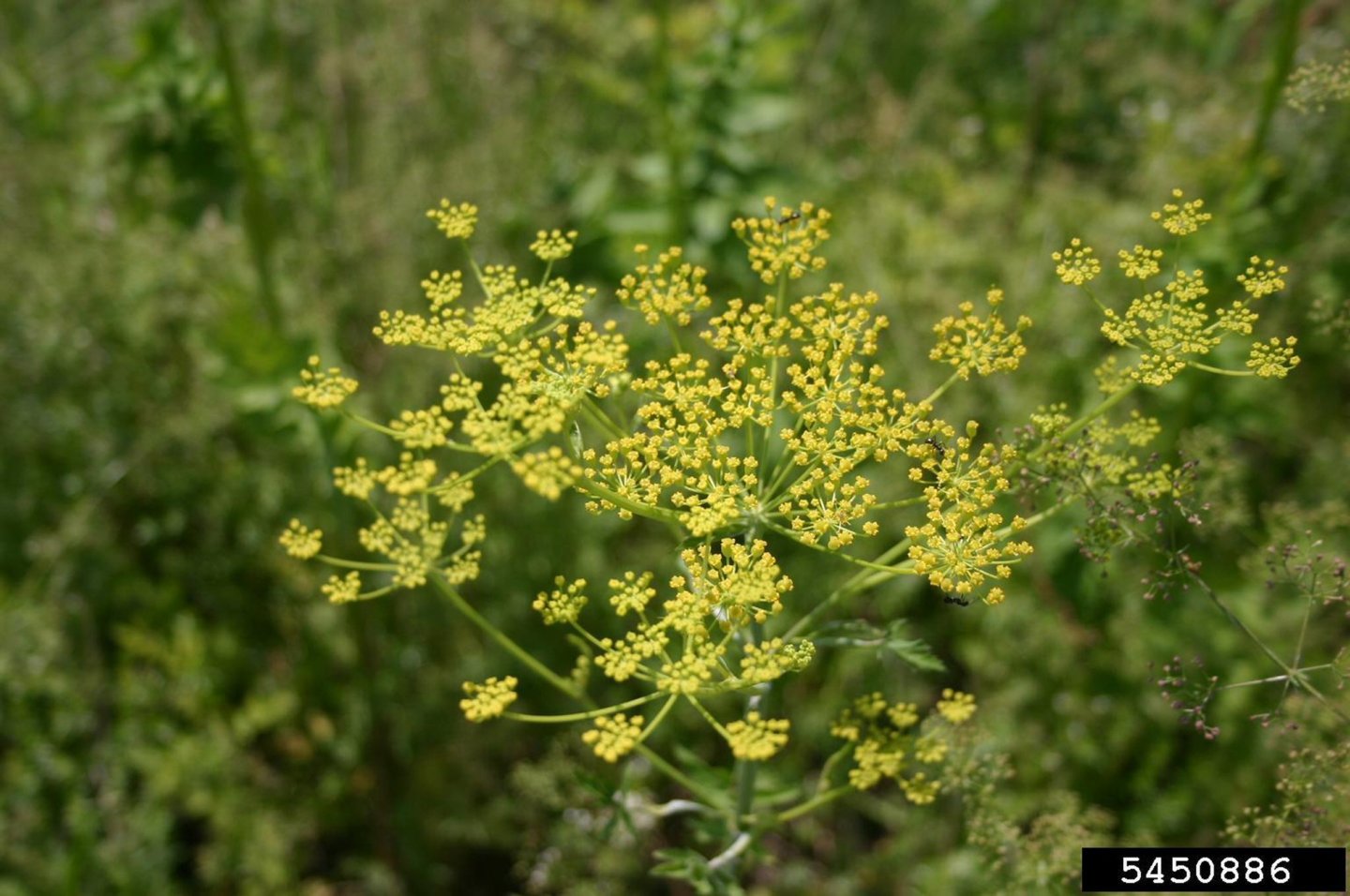Pastinaca sativa L.
Description
- Native to Europe
- Grows up to 2m tall, leaves up to 40cm long. Leaves can be smooth or hairy, and reduce in size and number the higher they are up the stem.
- Yellow flowers (florets) come in clusters of between and 6 and 25. Florets have five petals, which are rolled back.
- Thick yellow-brown taproot
- Grows in a wide variety of soil types, and moistures, but prefers dry soils with partial or full sun.
- Often confused with other members of the carrot family, wild parsnip can be distinguished from poison hemlock (invasive) by its yellow flowers and green stems with NO purple spots, from cow parsnip (native) by its yellow flowers, and from giant hogweed (also invasive) by its smaller size. Note that the leaves of all three of these plants contain phototoxic compounds.
“
Consequences of invasion
- WARNING! Skin contact with leaves or stems can cause photosensitivity (photodermatitis), which can result in severe blistering when exposed to sunlight.
- Leaves and stems are toxic to livestock.
- Can grow in thick patches that outcompete native species.
Introduction and spread
- Wild parsnip is the same species that is grown agriculturally, and was brought to North America for this purpose.
- It has spread outside of cultivated areas and become invasive across North America.
Status in the CKISS region
- Wild parsnip is classified as Eradicate on the CKISS Annual Priority List.
- It has only been found in the Creston and Kaslo Invasive Plant Management Areas at a limited distribution.
- CKISS is taking steps to eradicate the species from these sites and to prevent further spread into new areas.
- Please report any findings of this species immediately.
- To learn more about how CKISS classifies and manages invasive species, see our Invasive Species Priority Lists page.
Integrated pest management options
- Prevention: Do not let plants go to seed – seeds can attach to vehicles and ‘hitchhike’ to new areas. Become PlantWise! Choose non-invasive plants for your garden.
- Mechanical: Hand pulling (using gloves and long sleeves) is effective for small patches. Mowing before the plants go to seed can prevent further spread.
- All landfills within the RDCK and RDKB accept invasive plant species for free. Ensure your material is bagged in clear plastic bags and notify the attendant that you have invasive plant species. Plants must be identifiable through the bag. For more information please see the RDCK Resource Recovery Bylaw.
- Chemical:Chemical treatment may be an option, consult a professional.
- Biological:No biological control agents are currently being used for this plant in BC.









